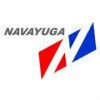
i
B.L. Kashyap & Sons
Filter interviews by
B.L. Kashyap & Sons Project Coordinator Interview Questions and Answers
B.L. Kashyap & Sons Project Coordinator Interview Experiences
1 interview found
I applied via Newspaper Ad and was interviewed before Dec 2022. There were 3 interview rounds.

(2 Questions)
- Q1. Regarding RMC and costing.
- Ans. RMC - Ready mixed concrete start from Grade M10 to M55 of ordinary concrete and specially self compacting concrete for congested reinforcement areas.It is controlled concrete production using weigh batch for aggregates , admixture and water to ensure good results. Cost differ as per transporting distance. To minimise cost and time site batching plant is preferred for concrete requirement of 5000 m3 per month atleast.
- Q2. Regarding checklist for preparation works for finishing start from plaster, flooring, joineries and painting etc.
- Ans. Surface should be free from laitance and other foreign matters. Joineries and other first fix items shall be fixed viz. doors conduits plumbing and electrical boxes etc. Level pads are to be provided to ensure uniform surface finish.Moisture test is to be done for damp free surface before painting walls and ceilings.finally sanitary and plumbing fixtures are to be fixed.
(2 Questions)
- Q1. What do you mean to by Zero budget ?
- Ans.
Zero budget refers to a financial plan where no funds are allocated or spent.
Zero budgeting involves starting from scratch and justifying every expense.
It encourages cost-consciousness and prioritization of resources.
Example: A project coordinator using zero budgeting would need to justify every expense, ensuring that it aligns with project goals and delivers value.
- Q2. Zero budget means actual dry cost of materials manpower water and electricity machine and tools involved in completing each and every items of works involved in the construction.
- Ans.
Zero budget refers to the actual cost of materials, manpower, water, electricity, and tools required for each construction task.
Zero budget refers to the direct costs involved in completing each item of work in construction.
It includes the cost of materials, such as cement, steel, and bricks.
Manpower costs, including wages and salaries of workers, are also part of the zero budget.
Water and electricity costs required fo...
Interview Preparation Tips
- Technical Skills
- Concrete
- Structural engineering basics
- Planning
- Project Communications
- Budgeting and costing
- Quality and Safety
- Computer Skills
Top trending discussions






Interview questions from similar companies

Project Coordinator Interview Questions & Answers
Oceaneering Internationalposted on 7 May 2024
I applied via LinkedIn and was interviewed in Apr 2024. There were 3 interview rounds.
(1 Question)
- Q1. Project management related questions
(1 Question)
- Q1. Project management
(1 Question)
- Q1. General HR questions


(1 Question)
- Q1. Interviewers ask regarding technical question
(1 Question)
- Q1. Year of experience, How much salary you get, salary expectation
Interview Preparation Tips


(1 Question)
- Q1. Sector based questions, similar to job oriented
(1 Question)
- Q1. Like case studies, or situational task
(1 Question)
- Q1. About personal and professional expectations
Interview Preparation Tips

I applied via Referral and was interviewed before Mar 2023. There was 1 interview round.
(5 Questions)
- Q1. Explain the project lifecycle
- Ans.
The project lifecycle is the series of phases a project goes through from initiation to completion.
Initiation: Define project goals, scope, and stakeholders
Planning: Create a detailed project plan, schedule, and budget
Execution: Implement the project plan and deliver the project
Monitoring and Controlling: Track progress, manage changes, and ensure quality
Closing: Finalize all project activities and hand off deliverable
- Q2. What was your role and contribution to the project
- Q3. What are the contents of model reviews
- Ans.
Model reviews typically include checking for accuracy, completeness, consistency, and compliance with standards.
Checking accuracy of dimensions and specifications
Ensuring completeness of all required components and features
Verifying consistency in design and documentation
Confirming compliance with industry standards and regulations
- Q4. What is the typical deliverables of the different deliverables
- Ans.
The typical deliverables of a project engineer include design drawings, technical specifications, project schedules, cost estimates, and progress reports.
Design drawings: detailed plans and schematics for construction or manufacturing
Technical specifications: detailed requirements for materials, equipment, and processes
Project schedules: timelines for completing tasks and milestones
Cost estimates: budget projections fo...
- Q5. Why this company
Interview Preparation Tips
Skills evaluated in this interview

Project Manager Interview Questions & Answers
Oceaneering Internationalposted on 17 Jul 2024
Questions on resource management
Senarios about work and attitue
Interview Preparation Tips

I applied via Referral and was interviewed in May 2022. There was 1 interview round.
(2 Questions)
- Q1. Technical and Managerial.
- Q2. Software Revit and BIM360
Interview Preparation Tips

I applied via Recruitment Consulltant and was interviewed in Sep 2024. There was 1 interview round.
(7 Questions)
- Q1. What are the Pump head loss calculation parameters
- Ans.
Pump head loss calculation parameters include friction loss, elevation change, velocity head, and fittings.
Friction loss due to pipe roughness
Elevation change between inlet and outlet
Velocity head due to fluid velocity
Losses from fittings like elbows, tees, and valves
- Q2. What is the AHU components
- Ans.
AHU components refer to the various parts of an Air Handling Unit that work together to regulate and circulate air in a building.
Filters - to remove dust and particles from the air
Coils - for heating or cooling the air
Fans - to circulate the air
Dampers - to control the flow of air
Humidifiers/dehumidifiers - to adjust the humidity levels
- Q3. Which type of blowers are use in AHU
- Ans.
Centrifugal blowers are commonly used in AHUs for their efficiency and ability to handle high volumes of air.
Centrifugal blowers are preferred for AHUs due to their ability to handle high volumes of air efficiently.
They are more energy efficient compared to other types of blowers.
Examples of centrifugal blowers commonly used in AHUs include forward curved, backward inclined, and airfoil designs.
- Q4. What is the difference between primary pump or secondary pump
- Ans.
Primary pump is the main pump responsible for the majority of the pumping work, while secondary pump is a backup pump used in case the primary pump fails.
Primary pump is the main pump in a system, while secondary pump is a backup pump.
Primary pump is responsible for the majority of the pumping work, while secondary pump is used only when needed.
Examples: In a heating system, the primary pump circulates hot water throug...
- Q5. What is the AHU valve conection
- Ans.
AHU valve connection refers to the connection of valves in an air handling unit for controlling the flow of air.
AHU valve connection is essential for regulating the flow of air in an air handling unit.
Valves are typically connected to the AHU ductwork to control the amount of air entering or exiting the unit.
Properly connected valves ensure efficient operation of the AHU system.
Examples of AHU valves include damper val
- Q6. What things are required in chilled water pipe size
- Ans.
Chilled water pipe size requirements depend on flow rate, pressure drop, material, insulation, and system design.
Flow rate: Determine the required flow rate of chilled water in the system.
Pressure drop: Calculate the pressure drop to ensure efficient operation.
Material: Select appropriate pipe material based on temperature and pressure requirements.
Insulation: Insulate the pipes to prevent heat gain or loss.
System desi...
- Q7. What is the chiller conection
- Ans.
The chiller connection refers to the method by which a chiller unit is connected to a building's HVAC system.
Chiller connection typically involves piping to transport chilled water from the chiller to the building's air handling units.
The connection may also include electrical wiring for power supply and control signals.
Proper chiller connection is crucial for efficient cooling and proper functioning of the HVAC system
Interview Preparation Tips
- prepare in HVAC chiller system

I applied via Approached by Company and was interviewed before Feb 2022. There were 2 interview rounds.

(3 Questions)
- Q1. What is refrigeration cycle? Commissioning stages of Data center?
- Ans.
The refrigeration cycle is a process that removes heat from a space and transfers it to the external environment.
The refrigeration cycle consists of four main components: compressor, condenser, expansion valve, and evaporator.
The compressor compresses the refrigerant gas, raising its temperature and pressure.
The high-pressure refrigerant then flows to the condenser, where it releases heat to the surroundings and conden...
- Q2. What is chilled water system? Types of ac system?
- Ans.
A chilled water system is a cooling system that uses chilled water to remove heat from a building or process.
Chilled water systems use water as a cooling medium.
They typically consist of a chiller, chilled water pumps, and a distribution system.
Chilled water is circulated through coils or heat exchangers to cool air or equipment.
Chilled water systems are commonly used in large commercial buildings, data centers, and in...
- Q3. Types of pumps? Types of compressor
- Ans.
Types of pumps include centrifugal pumps, reciprocating pumps, and rotary pumps.
Centrifugal pumps use centrifugal force to move fluid through a system.
Reciprocating pumps use a piston or diaphragm to create pressure and move fluid.
Rotary pumps use rotating mechanisms to transfer fluid.
Other types of pumps include gear pumps, peristaltic pumps, and vane pumps.
Interview Preparation Tips
Study the jd
Introduce yourself in a good way
Dont use extra pause during explanation.
Should be well dressed
Use the language in whic you are comfortable
Skills evaluated in this interview

Civil Site Engineer Interview Questions & Answers
Sterling & Wilsonposted on 3 May 2019
I applied via Referral
Interview Questionnaire
1 Question
- Q1. Steel structure and billing contractor salary discussion
Interview Preparation Tips
Skills: Communication, Body Language, Problem Solving, Analytical Skills, Leadership, Presentation Skills, Time Management, Decision Making Skills
B.L. Kashyap & Sons Interview FAQs
Some of the top questions asked at the B.L. Kashyap & Sons Project Coordinator interview -
Tell us how to improve this page.
B.L. Kashyap & Sons Interviews By Designations
- B.L. Kashyap & Sons Civil Site Engineer Interview Questions
- B.L. Kashyap & Sons Planning Engineer Interview Questions
- B.L. Kashyap & Sons Accountant Interview Questions
- B.L. Kashyap & Sons General Manager Project Interview Questions
- B.L. Kashyap & Sons Site Engineer Interview Questions
- B.L. Kashyap & Sons Assistant Project Manager Interview Questions
- B.L. Kashyap & Sons Senior Engineer Interview Questions
- B.L. Kashyap & Sons Junior Engineer Interview Questions
- Show more
Interview Questions for Popular Designations
- Sales Coordinator Interview Questions
- Coordinator Interview Questions
- Clinical Research Coordinator Interview Questions
- Logistic Coordinator Interview Questions
- MIS Coordinator Interview Questions
- District Coordinator Interview Questions
- Academic Coordinator Interview Questions
- Field Coordinator Interview Questions
- Show more
B.L. Kashyap & Sons Project Coordinator Interview Process
based on 1 interview
Interview experience
Interview Questions from Similar Companies
B.L. Kashyap & Sons Project Coordinator Reviews and Ratings
based on 2 reviews
Rating in categories
|
Site Engineer
100
salaries
| ₹2 L/yr - ₹6 L/yr |
|
Civil Site Engineer
82
salaries
| ₹2 L/yr - ₹6 L/yr |
|
Senior Engineer
77
salaries
| ₹4.1 L/yr - ₹8 L/yr |
|
Junior Engineer
39
salaries
| ₹2.5 L/yr - ₹5 L/yr |
|
Junior Engineer Civil
36
salaries
| ₹2.3 L/yr - ₹4.2 L/yr |

Sterling & Wilson

Nasser S. Al Hajri Corporation

Navayuga Engineering Company

L & W Constructions
- Home >
- Interviews >
- B.L. Kashyap & Sons Interview Questions >
- B.L. Kashyap & Sons Project Coordinator Interview Questions










